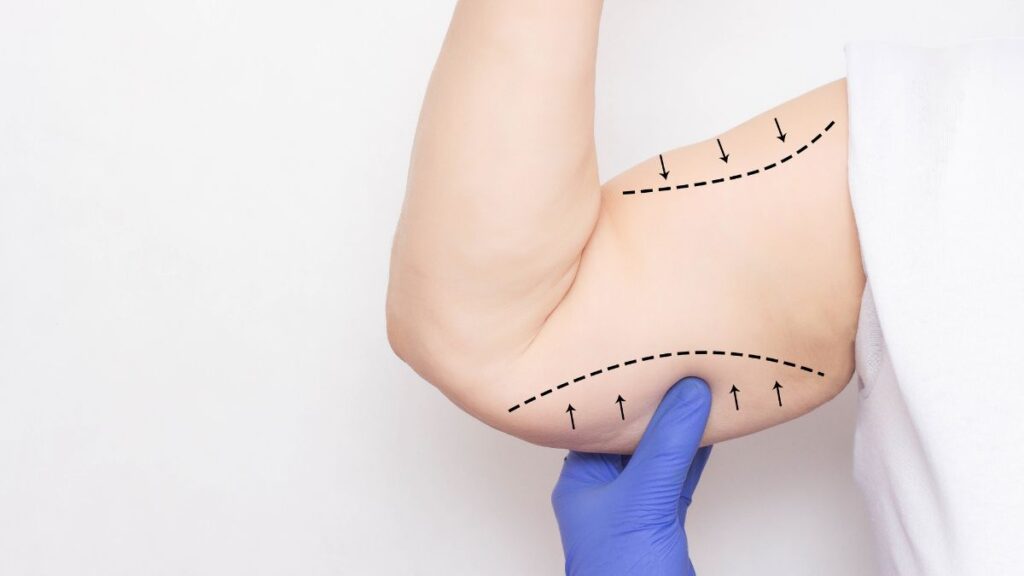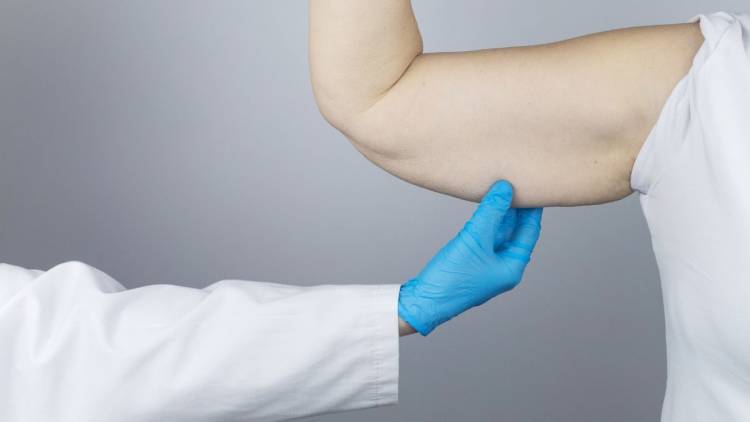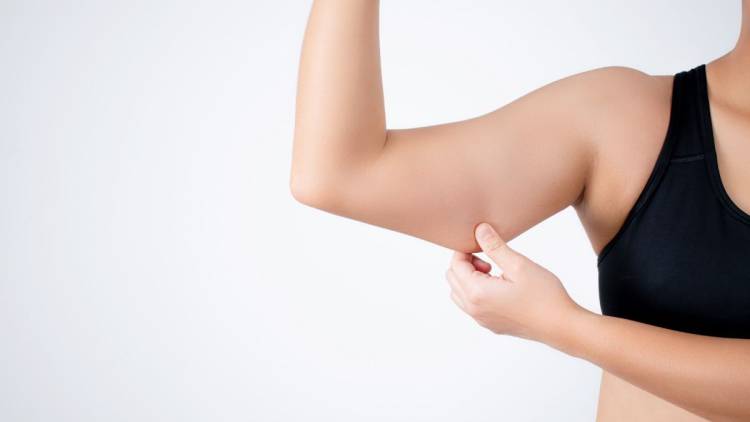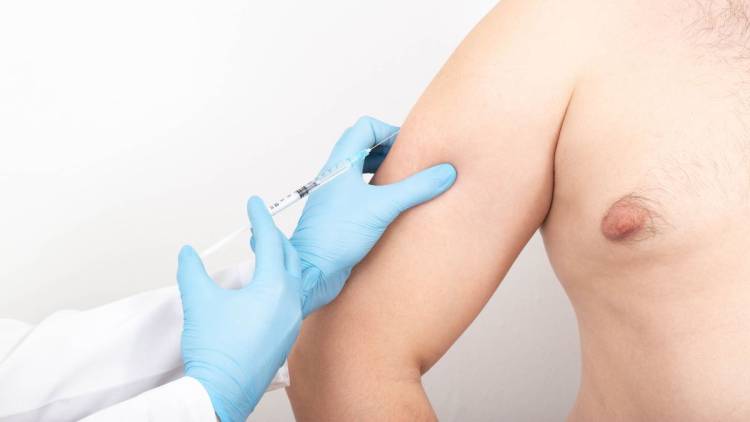As you age, you may notice that there is a lot of lax skin on your upper arms. Unfortunately, your body loses its natural ability to produce collagen and elastin and hold the tissues in place. This can result in ‘batwings’ or ‘ta-ta’ arms. In addition to this, if you’ve suffered massive weight gain or loss, you may also experience flappy skin on the upper arms.
This condition around the upper arm can happen regardless of a senior’s BMI score. Diet may not help. It becomes frustrating. This is why some seniors consider having an upper arm lift.
As this is very unsightly, you may want to remove the excess skin and restore the firmness in your arms. You may also want to be able to wear any clothes you want or to simply stop wearing upper arm compression garments.
No products found.
Being able to go to the pool in your 60s and 70s without feeling embarrassed about your body is also one of the benefits of upper arm lift or brachioplasty.
What is Arm Lift or Brachioplasty?
Brachioplasty is a surgical procedure that removes excess skin from your upper arms. Also known as Upper Arm Lift, it is a commonly done procedure, especially in patients that are aging and would like to restore their youthful looks or that have lost a lot of weight and have ended up with a lot of loose skin all over their body. Although brachioplasty cannot remove excess skin from, for example, the belly, it is a very useful procedure that restores the looks of your arms.
Getting an arm lift, or brachioplasty, is a fairly common procedure. Each year, in the US alone, there are over 15,000 brachioplasty procedures. Most commonly, these are the patients over the age of 40 (mostly women) and over the age of 55 (when men join the average patient’s profile). Needless to say, almost every experienced plastic surgeon knows how to perform the procedure.
Why You May Have Hanging Upper Arm Skin
Once you start considering tightening your upper arms, you may also consider the reasons why you have flabby upper arms in the first place.
There are two main reasons why you may have flabby upper arm skin:
- It is a natural result of aging,
- It is the result of significant weight gain and loss.
Flappy upper arm skin can be a result of aging. The thing is, all your tissues are not made of individual cells stacked on top of each other. If this were the case, wind and water could easily erode you, as is the case with sand castles, for example. Rather, your cells are submerged in a matrix or a scaffolding made of collagen and elastin. This forms tissues, which are then further organized into your organs.
Your organs are held together and in place by similar structures made of those same substances: collagen and elastin. However, as you age, you lose the ability to produce these two proteins and end up with less of them in the body. This, in turn, means less firm skin and more lax skin all over the body. Genetics and lifestyle choices play a huge role in how fast your body can replenish this collagen once it’s depleted.
In addition to this, weight gain or loss can also have a say in how much loose skin you have on your upper arms. Namely, as you gain weight, your skin thins out and grows to accommodate for the excess fat and volume that it has to support. When you lose weight, your skin contracts. However, this does not mean that your skin will go all the way back, as it can only retract so much. Once this threshold has been reached, you are left with lax skin.
What Is the Purpose of Upper Arm Lift?
You may have lax upper arm skin for one of the above reasons or even both. Once this loose skin becomes a nuisance, you may experience a loss in the quality of life, as you may:
- Avoid social events with a certain dress code, such as swimming pool parties,
- Feel discomfort in your daily life,
- Experience embarrassment at the looks of your arms,
- Experience frequent and/or repeated infections and ulcers on the upper arm skin,
- Experience intense sweating due to the overlap of the skin.
The purpose of an upper arm lift is to help you get rid of all these personal body/appearance issues by removing the excess skin around your upper arm. You are left with an invigorated figure and recontoured arms, while at the same time, you can start feeling more confident as there is nothing on your body to hide. The results are long-lasting, and you may keep the skin tight by watching your weight for decades to come.
Should You Get an Upper Arm Lift?
If you experience any of the discomfort outlined above, you may start thinking about an upper arm lift. This surgical procedure is a perfect way to remove some fat and excess skin. However, it should not be seen as a replacement for losing weight and leading a healthy lifestyle. If, however, you want to have an arm lift surgery, you may do so for two kinds of reasons:
Medical Reasons
Any lax, loose skin can mean a lot of distress, both emotionally and physically. If you frequently experience pain in your shoulders, upper back, or the neck and feel the excess skin pulling on your arms, you may want to consider getting a brachioplasty for medical reasons.
If you also experience regular infections in the overlap area or skin ulcers, particularly unpleasant smell, or another reduction in the quality of your life, you may want to contact your health insurance issuer: they may cover a portion of brachioplasty costs.
Cosmetic Reasons
On the other hand, if you are simply bothered by the loose skin and would like to remove it for cosmetic reasons, you will most probably receive no coverage. In this case, you will pay for the entire procedure by yourself. However, you will be able to enjoy the same quality of life post-brachioplasty as any other patient.
Arm Lift Before and After
This quality of life is reflected in more social events you can attend, being able to visit pool parties and go on a beachside vacation. Everything you may have felt ashamed of will be removed, and you will be able to enjoy the quality of life you deserve. If you decide to have a brachioplasty for medical reasons, you will also be able to enjoy an infection-free life and no uncomfortable sweating throughout the day.
Arm Lift Procedure
To get there, you first need to undergo an arm lift procedure. During this procedure, your surgeon will sedate you, and you will not be conscious for the duration of the surgery. Your experienced plastic surgeon will then make marks on all the skin that should be removed and will proceed to do so. After the excision is made, your surgeon will suture the incision places and slowly wake you up from sedation. The procedure takes a few hours to complete, while the recovery will take a few weeks.
Arm Lift Recovery
That being said, the initial stage of recovery will take around two weeks. During this time, your incision sites will be healing. It takes up to three weeks for the scar tissue to form and the skin to reattach itself to the underlying tissues. During this time (and up to six weeks), you should wear a compression garment to keep the skin secured to the tissues below it and to ensure esthetically pleasing results.
Arm Lift Side Effects
As with any other surgical procedure, there are some risks and side effects of Brachioplasty as well. You should be aware of these so that you can discuss them with your surgeon. Knowing what to expect can also reduce the chances of these complications, as you will know which behaviors are risky and how to prevent injury. Here are common side effects of an upper arm lift.
- Bleeding at the incision site,
- Hematoma deeper from the incision site,
- Swelling – which is normal for up to two weeks after Brachioplasty,
- Fat necrosis,
- Skin necrosis,
- Numbness (a normal part of the recovery), as well as
- Nerve damage.
Always remember that choosing an experienced plastic surgeon will help you reduce these risks to a minimum. Taking plenty of rest and fluids and having a healthy diet will speed up the recovery. Always remember that the upper arms are an area of movement and that limiting this movement will reduce the stress on the skin as it heals.
Never do more than you are comfortable with, and always follow your surgeon’s instructions to the last bit. After all, brachioplasty does not come cheap.
How Much Is an Arm Lift? Worth It?
The American Society of Plastic Surgeons notes that the average cost of a brachioplasty was $4,850 in 2020. How much you will pay for an arm lift depends on a variety of factors.
Is it worth it? The price may not be too much depending on your income and the increase in life quality and a healthier, better-contoured body. It is a personal choice.
Upper Arm Lift FAQs
Why Does My Shoulder Hurt When I Lift my Arm?
As the skin on your upper arms gets saggy and loose, it starts to pull down on the tissues, including your shoulder muscles and skin. When you lift your arm, this can result in pain that can be of varying intensity. The bigger the flap, the stronger the pain that you can experience.
When Can I Lift My Arm After Arm Lift?
You will be able to lift your arms immediately after the procedure. Please note that this movement will be very limited due to the swelling and your skin recovering. You should not force yourself to lift the arms, as this may injure the incision place and rip the stitches open. Please allow yourself time before you attempt a full-range movement.
How Long Does a Brachioplasty Take to Heal?
The initial stage of the healing process takes around two weeks. During this time, you should rest as much as possible but still have slight physical activity, such as walking around the home and the yard a few times a day. This will help speed up the recovery by rushing the blood to the incision site. You will be able to resume most of your activities within three weeks, while all activities, including exercise with weights, will have to wait for at least ten weeks.
Final Considerations
Brachioplasty is a common surgical procedure with great results and little downtime. The procedure restores the quality of your life and youthful contours of your body by removing excess fat and flabby skin from your arms and is a great procedure to have if you are in your 50s or even 60s and have suffered a massive weight gain and weight loss. Additional procedures can be added to your brachioplasty, depending on your needs and desired results.




